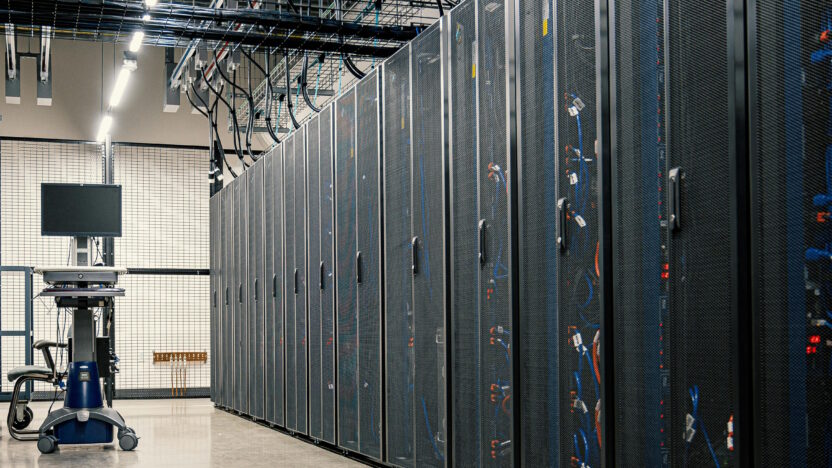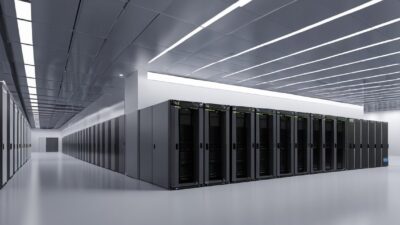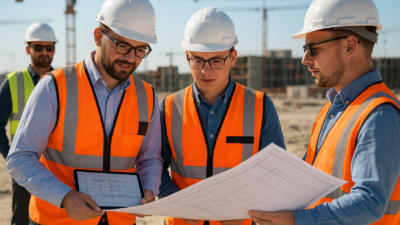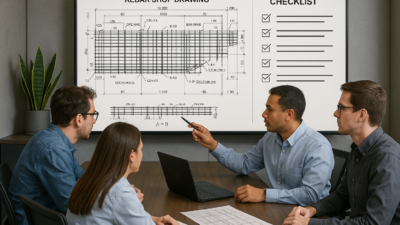Introduction
As digitalization accelerates, the role of data centers in the European infrastructure landscape is becoming more and more important. By 2025, the integration of new technologies and sustainability initiatives will change how data centers are designed, built and operated. This article looks at the trends that will shape the Architecture, Engineering and Construction (AEC) industry, and the synergy between technological progress and sustainable construction.
Importance of Data Centers to Business
Data centers are vital to the success of modern businesses, playing a crucial role in supporting operations, applications, and activities. They provide a secure and reliable environment for storing and managing business-critical data and applications, ensuring that these resources are always available when needed. Data centers enable businesses to scale and grow their operations, offering the flexibility to expand as demand increases. They also support business continuity and disaster recovery, ensuring that businesses can quickly recover from unexpected events and maintain their operations. By ensuring the performance and integrity of core business components, data centers help businesses stay competitive in a rapidly evolving digital landscape.
Trend #1: The Rise of AI-Driven Infrastructure
The rise of AI applications requires data center infrastructure to handle increased compute loads. Large data centers need to achieve high energy efficiency to manage these increased loads effectively. This means new AEC approaches to accommodate high density deployments, focusing on space efficiency and robust structural design to support advanced cooling technologies. A cooling system is crucial in managing the heat generated by AI applications. AI not only optimizes the design and operation of data centers but also drives the evolution of construction methods to meet these complex demands. A building management system plays a vital role in monitoring and responding to environmental conditions in data centers.
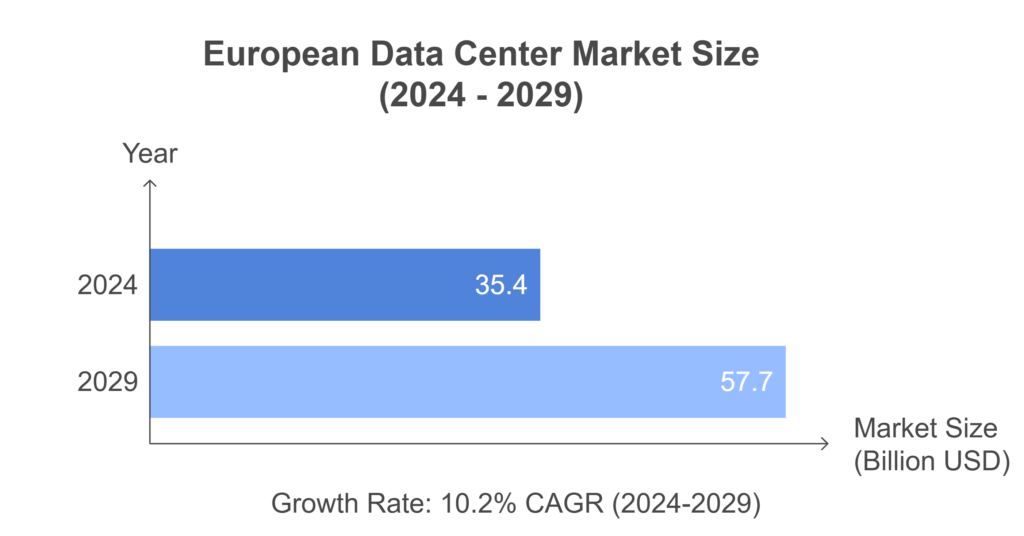
Source: Mordor Intelligence
Trend #2: Sustainability Initiatives in Data Center Construction
European data centers are ahead of the curve on sustainability, with an increasing move towards renewable energy sources like solar and wind. The green data centers will lead the Europe data center market. Green data centers are becoming crucial in the European market due to their reliance on renewable energy sources and eco-friendly building materials. This means AEC sectors are prioritizing the use of sustainable materials and green construction methods. Projects now focus on energy efficiency from the design phase, with features like natural cooling sources and energy efficient building envelopes to reduce ecological footprints. Data center efficiency is a key aspect of these sustainability initiatives, with metrics like Power Usage Effectiveness (PUE) being used to measure and improve operational effectiveness. The FLAP (Frankfurt, London, Amsterdam, Paris) markets, the core data center (colocation) hubs in Europe, have seen a big push towards renewable energy sources and have reduced carbon footprints significantly.
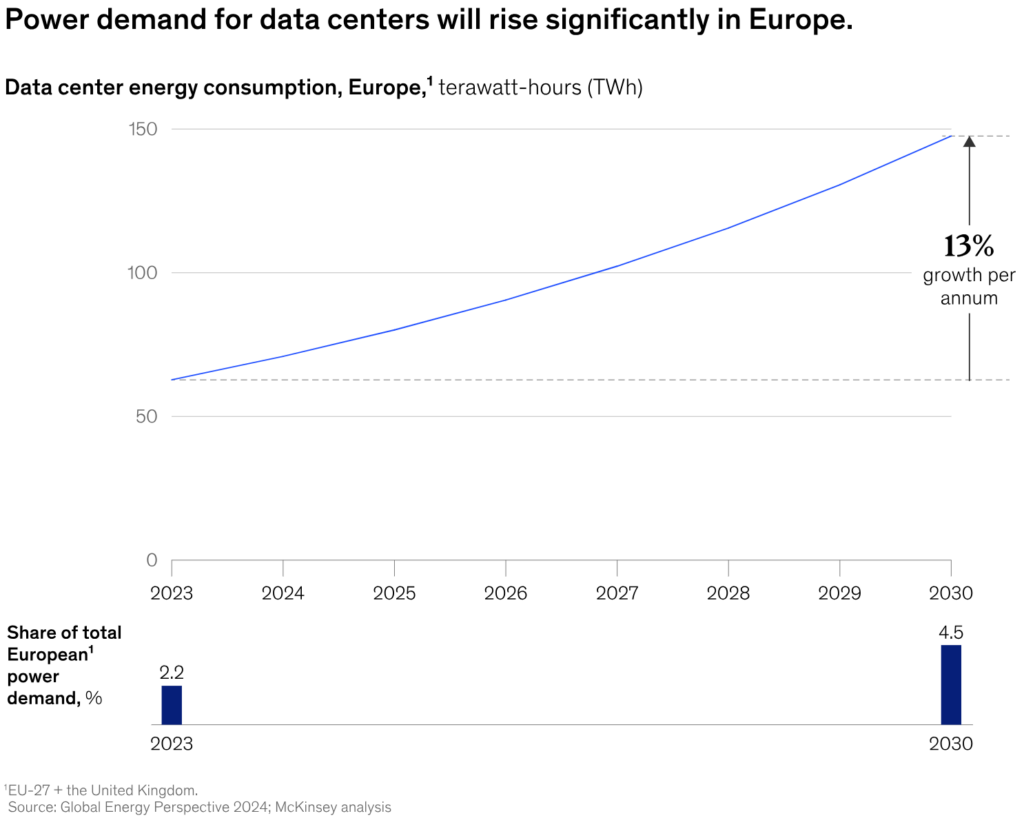
Source: McKinsey & Company
The European green data center market is expected to be worth almost 50 billion USD by 2030, up from 14.57 billion USD in 2023. Germany will be the largest market, followed by the UK and France.
Trend #3: Advanced Cooling Technologies and Energy Efficiency
With data centers getting denser, advanced cooling solutions like direct liquid cooling and immersion cooling are becoming more common. Cooling units play a crucial role in enhancing cooling efficiency by working in conjunction with systems like cold aisle containment to prevent the recirculation of hot air from IT equipment. These technologies not only reduce carbon footprint but also challenge traditional engineering practices, forcing new construction methods to incorporate these systems from the ground up.
A study by the Lawrence Berkeley National Laboratory showed that liquid cooling can reduce data center energy usage by up to 27% compared to traditional air cooling.
The AEC sector needs to redesign facilities to accommodate these technologies which often require custom engineering solutions and new construction methods to optimize energy consumption and cooling performance. Additionally, evaluating the energy efficiency of these advanced cooling technologies is critical, and this is where power usage effectiveness (PUE) becomes important. Maintaining a low PUE is essential for optimal energy performance and sustainability within data centers. PUE is calculated by taking the total power entering the data center divided by the power used by IT equipment, highlighting the importance of reducing overhead power consumption to improve energy efficiency.
Trend #4: Modular Construction: A Speedy Solution
Rapid deployment of data centers is met by adopting modular and prefabricated construction methods. These methods not only speed up construction time but also allow for scalability on demand. Modular construction methods can also be applied to build a dedicated data center quickly and efficiently.
This is big for the AEC sector as it means rethinking project timelines and resource allocation to build data centers fast and efficiently. AEC professionals are using these methods to deliver projects faster and reduce costs and carbon footprint.
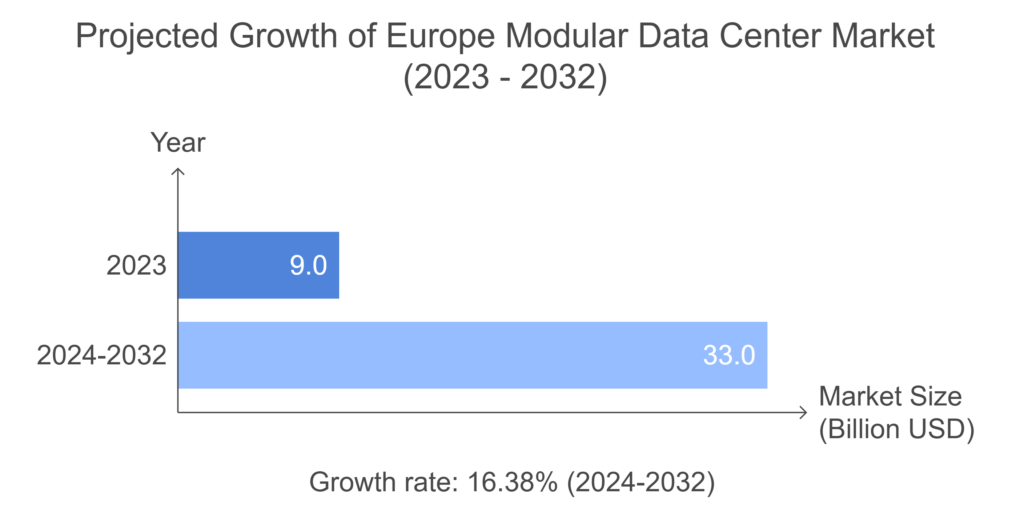
Source: Credence Research
The adoption of modular and prefabricated construction methods is gaining momentum, offering a 35% reduction in construction times and a 20% cut in costs.
Connect with pre-qualified vendors who specialize in modular construction >>
Trend #5: Strategic Site Selection for Future-Proofing
Site selection is influenced by energy availability, cost and geopolitics. Understanding the power needs of a data center site is crucial for effective design and utility discussions. The AEC sectors need to assess potential sites, considering connectivity, natural disaster risk and local regulations. Managing the physical facility is essential for security and operational efficiency. This thorough site evaluation ensures data centers are located to serve their markets and minimize construction and operational challenges.
Data centers in Europe are moving north where the cooler climate means less need for artificial cooling and lower operational costs and energy usage.
Region with abundant carbon-free energy and lower temperatures could be used for strategic site selection.
Share of carbon-free electricity in grid in 2023, (%)
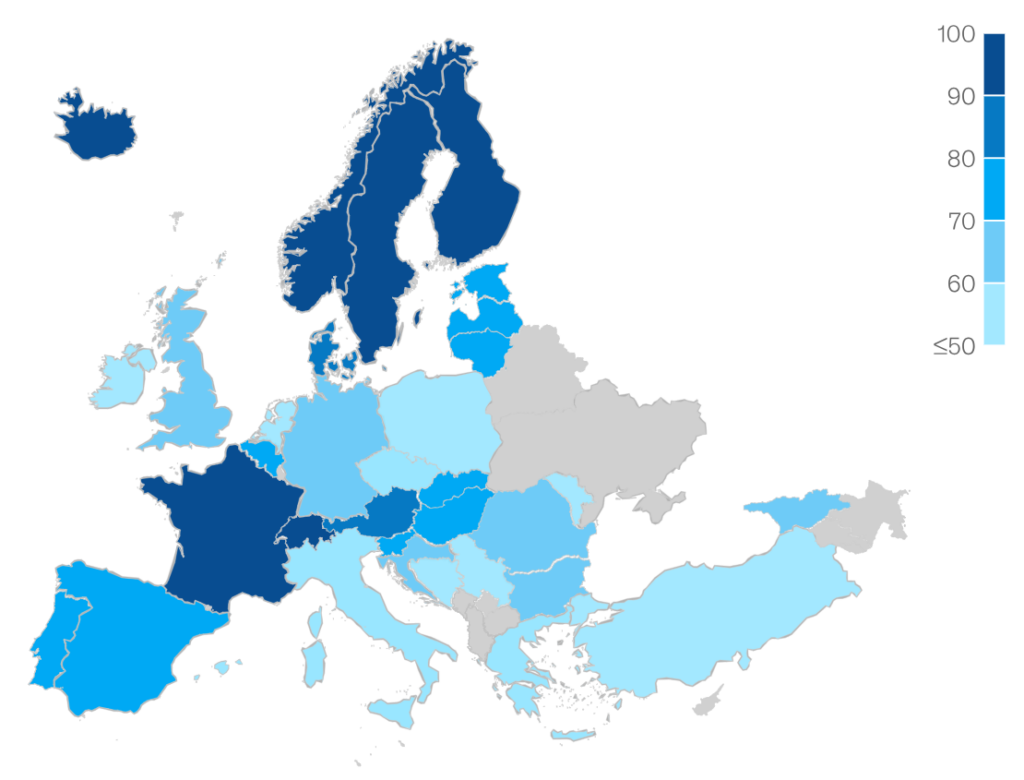
Source: McKinsey & Company
Trend #6: Integrating Technology for Digital Transformation
Digital tools like BIM (Building Information Modelling) and digital twins are changing the AEC sectors. Network infrastructure plays a crucial role in connecting various elements within a data center, such as servers, storage systems, and external connectivity. These technologies improve construction project precision and efficiency, enable real-time collaboration and monitoring. Analyzing a data center’s energy use and efficiency, focusing on metrics like Power Use Effectiveness (PUE), is essential for optimizing operations.
BIM in Data Center Construction
BIM allows project teams to create and manage digital representations of physical and functional characteristics of spaces. By using BIM, teams can calculate power usage effectiveness (PUE) by showing how the ‘data center is divided’ power usage is distributed, highlighting the energy dedicated to IT operations versus overhead consumption. In the context of data centers, BIM enables detailed layering of electrical, mechanical and plumbing services which are critical as data centers are complex facilities especially with the new cooling systems and ESG regulations.
Digital Twins: Enhancing Operational Efficiency
Digital twins in data centers construction and operations simulate the physical data center. They help optimize building operations and maintenance. By optimizing operations and maintenance, digital twins can significantly improve data center efficiency, addressing environmental concerns and sustainability. Digital twins allow AEC professionals and facility managers to test changes in a virtual environment before implementing them which can significantly improve operational efficiency and predict future outcomes.
A typical data center takes about 36 weeks to build onsite, a prefabricated modular data center can reduce the time onsite to 16 weeks when combined with BIM methodology….
Source: Schneider Electric
BuildTwin is at the forefront of this digital revolution, offering a comprehensive platform for AEC professionals. With BIM, digital twins and real-time project tracking BuildTwin enables collaboration between architects, engineers and construction teams so every project is delivered fast and to the highest standard.
Trend #7: Workforce Development and Training Initiatives
The skills gap in the AEC sectors is critical to keeping up with the demands of data center construction. Training programs and continuous learning is essential to upskill professionals in emerging technologies and construction methods. There will be 2 million people to run the world’s data centers by 2025 and data centers need to find 300,000 more staff by 2025. Source: Data Centre Dynamics. Source: Data Center Dynamics
There is an ongoing effort across Europe to increase the number of qualified AEC professionals in the data center sector by 25% by 2025 through targeted education and training programs.
Germany is one of the world’s largest employers in the field of data centers, offering a dual vocational training system and great potential for skilled professionals. Source: German Datacenter Association
Conclusion
As we look to 2025 and beyond data center construction in Europe will be at the forefront of technology and sustainability. The trends discussed reflect a broader shift towards more sustainable, efficient, and technologically advanced infrastructures that are equipped to meet the future demands of the digital economy.
Contact us today to explore how we can support your next data center project with our global marketplace of qualified design vendors and a comprehensive ERP solution, ensuring a future where technology and collaboration drive success.
